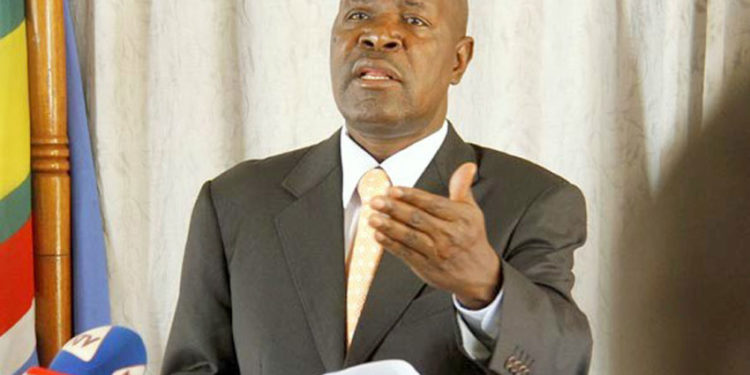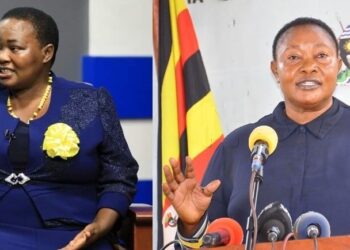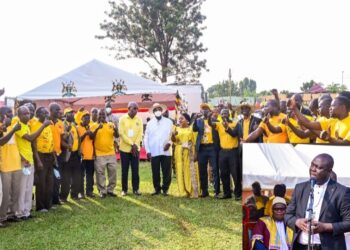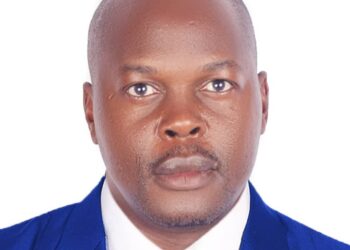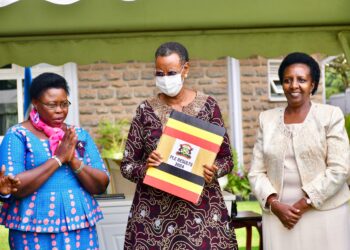Times really change to see Kizza Besigye washed out as a national politician while the movement he started in 2000, the Reform Agenda, now turned Forum for Democratic Change (FDC) party blowing a faint fiddle at the national stage with no apparent direction, and support dwindling. And because FDC was built on a maze of calculated falsehoods laced with hate, inflated hope, and personal disgruntlement it’s really hard to see how it revamps. With Besigye holding FDC hostage, and now back at Najjanankumbi having sideline activities there, many leaders have as of necessity followed him in extremism and cannot accept that they have lost it all if they don’t move to the political middle ground of good-faith disagreement or compromise.
The unbraided firebrands holding FDC sails are Besigye, Patrick Oboi Amuriat, Nathan Nandala Mafabi, Prosscovia Salaamu Musumba, Philipo Wafula Oguttu, Ibrahim Ssemujju Nganda, Erias Lukwago, and Doreen Nyanjura. This cabal is very disdainful of other opposition groups and leaders, although pointers are that a split could be underway with Besigye facing Nandala and Amuriat. But whichever camp cycles the wagon of the next FDC presidency isn’t likely to move FDC to a middle ground.
As a party of internal nastiness, FDC has suffered either apathy or desertions by many of its founding leaders among them John Butime and Eriya Kategaya (RIP), Beti Kamya, Maj. (rtd) Rubaramira Ruranga, Martin Wandera, Amanya Mushega, Augustine Ruzindana, John Kazoora, Winnie Babihuga, Mugisha Muntu, Jack Sabiiti, Ezati Kasiano Wadri, Reagan Okumu, Joyce SSebugwawo, Ogenga Latigo, Beatrice Anywar, Odonga Otto, Abdu Katuntu, Alice Alaso, Winnie Kizza, Elijah Okupa, and Ingrid Kamateneti Turinawe.
In an attempt to create relevance, Besigye and idle political sidekicks on New Year’s Day organised a meeting but dubbed a prayer session at Nsambya Sharing Hall which was foiled by police at which they intended to launch a ‘united front for change’ together with Robert Kyagulanyi.
But it’s well to remind Ugandans that Besigye has been at the forefront of many similar stillbirth bravados in the past vowing that President Museveni’s government would not last its five year full-term cycle beginning in 2001 with People’s Redemption Army (PRA), a rebel outfit that was crushed in Pandroma in the Democratic Republic of the Congo. As a copycat, picking from the so-called Arab Spring, Besigye fought running battles with police in Kampala during the ‘Walk-to Work’ soon after he lost 2011 presidential election and trying to exploit the then global economic crunch.
In 2016 Besigye again formed the so-called ‘Peoples’ government’ replete with a ‘peoples’ assembly’ that used to sit at his home in Gayaza. Having not gone far with it, together with FDC headquarters they then launched weekly blowing of whistles every Tuesday (1.00pm), honking car horns, banging utensils and prayers every Thursday lunchtime which suffered a stillbirth. After the 2021 presidential elections from which he fled knowing that Kyagulanyi had displaced him and feared drubbing, Besigye launched what he termed the ‘Red Card’ movement and a “People’s Front for Transition” which didn’t survive day light.
Over the last two decades in opposition where he had been supported by the UPC and DP old guards, there’s now sufficient evidence that Besigye has tried to use deceit to remain relevant when he doesn’t have the mettle to sustain a democratic or even military political struggle, coming off more as an adventurist.
Watching Besigye and FDC playing a third inconsequential faint fiddle as support curves and becomes sparsely spread, you have to wonder what FDC will really be by the next general election in 2026. At its short-lived political height in 2006-2016 FDC had at most 37 MPs and six district local government chairpersons but noisy in Acholi, West Nile and Kasese regions.
Riding on popular political, economic and social disaffection as armed rebellion by the Lord’s Resistance Army of Joseph Kony, ADF, and armed Karimajong cattle rustlers ravaged northern Uganda, Teso, West Nile and Kasese, Besigye, Reform Agenda and later FDC, became the convenient vehicles to mobilise political support and electoral votes.
However with those misfortunes successfully resolved, Besigye and FDC have thinned out as the straw with which they fed became blocked, and clearly are on a steady decline as electoral support at presidential, parliamentary and local government since 2006 have shown. Many pundits believe that with the ongoing morass within FDC, it will have to probably be a major catastrophe on the part of NRM for FDC to rise from the sewers.
Today in parliament with only 29 MPs out of 529, FDC appears to have one lone vocalist Ssemujju Nganda (Kira Municipality) shooting wild volleys usually at any wild birds flying past the reason the opposition couldn’t support him for Speaker and heads no committee. He now mostly runs from one media house to another possibly hoping to create a national appeal. Still many observers see the political terrain ahead as fearsome for FDC although they may try to recapture Kampala, Wakiso and urban centres in Buganda as NUP becomes a lost if not hopeless cause.
Do you have a story in your community or an opinion to share with us: Email us at editorial@watchdoguganda.com


